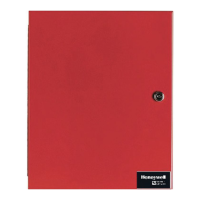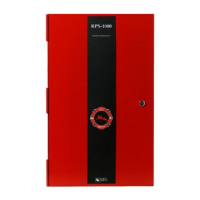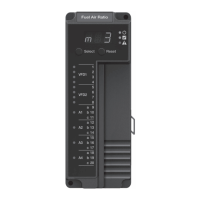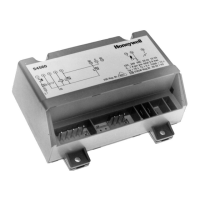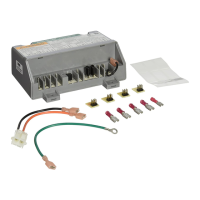5895XL Manual — P/N 151142-L8:M 2/15/2022 19
Wiring Specifications Before You Begin Installing
2.6 Wiring Specifications
2.6.1 Length Limitations
This section contains information on calculating SBUS wire distances and the types of wiring configurations (Class A and B).
2.6.2 Calculating Wiring Distance for SBUS Modules
The following instructions will guide you in determining the type of wire and the maximum wiring distance that can be used with SBUS
accessory modules.
To calculate the wire gauge that must be used to connect SBUS modules to the panel, it is necessary to calculate the total worst case current
draw for all modules on a single 4-conductor bus. The total worst case current draw is calculated by adding the individual worst case currents
for each module. The individual worst case values are shown in the table below.
Alarm: mA mA
Alarm: mA
mA
Alarm: mA
mA
C Notification Appliances Current
mA
D Total current ratings of all devices in system (line A + line B + C) mA mA
E Total current ratings converted to amperes (line D x 0.001): A A
F Number of standby hours H
G Multiply lines E and F. Total standby AH AH
H Alarm sounding period in hours. (For example, 5 minutes = 0.0833 hours) H
I Multiply lines E and H. Total alarm AH
AH
J Add lines G and I. Total ampere hours required
5
AH
1 The FACP can only support 2 devices with LEDs on. The current draw has been added to the panels alarm current.
2 If using 24 VDC aux power only. No standby or alarm current is needed for battery calculation if using 24 VAC, 120 VAC, or 240 VAC.
3 Maximum SBUS address capacity is determined by the amount of SBUS bandwidth consumed by each SBUS module. Refer to the
FACP manual for SBUS limitations.
4 If there are door holders in the system, there is no need to consider door holder current for alarm/battery standby, because power is
removed during that time. However, during normal operation, door holders draw current and must be included in the 1.8 A total current
that can be drawn from the panel.
5 Use next size battery with capacity greater than required.
Device # of Devices Current per Device
Standby
Current
Alarm Current
Table 2.5 Current Draw Worksheet for SD SLC Devices
NOTE: Total worst case current draw on a single SBUS cannot exceed 1 amp. If a large number of accessory modules are required and the
worst case current draw will exceed the 1 amp limit, then the current draw must be distributed using 5895XL Power Expanders. Each 5895XL
Power Expander provides an additional SBUS, with an additional 1 amp of SBUS current. Wiring distance calculations are done separately for
each 5895XL, and separately for the panel itself.
Model Number Worst Case Current Draw
6860, 5860, 6855 Fire Annunciators 0.120 amps
6815 SLC Loop Expander 0.078 amps
5815XL SLC Loop Expander 0.150 amps
5824 Serial/Parallel Printer Interface Module 0.040 amps
5880 LED I/O Module 0.250 amps
5865 LED Annunciator 0.200 amps
5895XL Intelligent Power Supply 0.010 amps
5496 NAC Expander 0.010 amps
EVS-50W 0.010 amps
EVS-125W 0.010 amps
EVS-100W 0.010 amps
EVS-100W with EVS-100WBU 0.010 amps
EVS-VCM / EVS-VCM with EVS-SW24
1
0.115 amps per device/0.185 amps for last device
EVS-LOC with EVS-SW24
1
0.210 amps per device /0.325 amps for last device
ECS-NVCM Network Voice Control Module 0.059 amps
ECS-EMG keypad 0.06 amps
SK-NIC Network Interface Card 0.021 amps
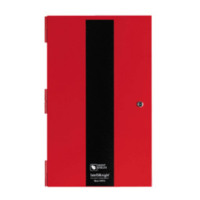
